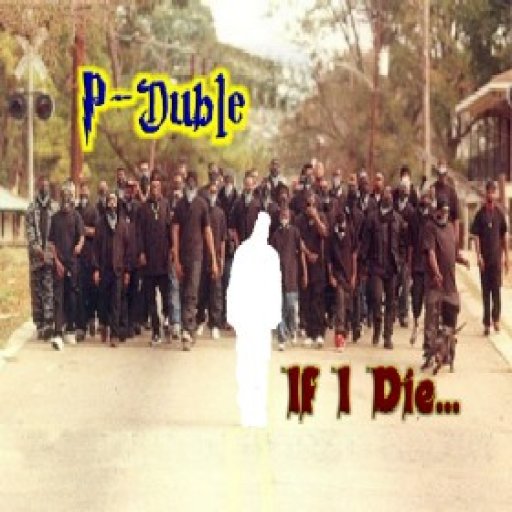
über P-Duble
P-Duble
As one of the hottest up-n-coming artists in the industry…and more than 10 years older than most of his comrades, P-Duble has experience and maturity to bring to the table.
P-Duble is thirty-four and was almost 10 years removed from his last release, “Birth Uv A G,” in 1999. The record, and P-dub’s voice—classics in the now popular, but still young, Christian Hip-Hop World—set the stage for his hiatus and allowed him to learn some important life-lessons until the time was right for him to step back behind the microphone.
Thanks to the persistence of such cultural icons as Sup C, Mr. Solo and T-Bone and reinforced by a mainstream culture that loves to occasionally dust off classic adages, P-dub has never really left the game, or missed a meal. He couldn’t be happier that the Lord has continued to fuel his calling into the hip-hop ministry.
“I appreciate that the Lord has allowed me to still stay in this game and I thank Him for the blessings He has bestowed upon me,” P-dub says. “Not talking financially, just talking about my family, life and being relevant in His scheme.” P-dub hasn’t relied on samples alone to stay and get back into the game. He came-back on the scene with a vengeance with his 2006 release, “No One.” This self-produced project tossed itself into more than 10,000 heads and set the stage for what has been a spiritual re-awakening on a major hip-hop scale.
As for the rest of his history, P-dub first formed a group with some of his boys called “Dead On Arrival,” back in 1990. P-Duble dropped himself from the group and saw the remaining duo sign with Philadelphia-based Bodybag Records and release an album…and then…saw it collapse on the shelves. P-Duble (known as Lil’ Pookie at the time) then proceeded to drop his own underground projects, such as “Blak + Wyte” in 1992, “Bottom of my Boot” in 1994, “Pooc OG: tha’ gangsta’ chronicles” in 1995 and then “Birth Uv A G” in 1999.
In between these individual releases, he combined with Michigan-based Luppy to form the “Outsiders.” They worked together and collaborated on one-project that was released in 1996 and opened-up the door for Luppy to jump onto the scene with his own group, “LPOutsiders.”
Lup and P-dub saw a future together, but the business and differing aspirations ultimately took a toll on their relationship. “That relationship got really messed-up for awhile,” P-dub says. “I was so immature that I wouldn’t allow myself to see eye-to-eye with him, which was a mistake, because he was right and he was so talented and was really the heart and soul of what we were doing. The music business is notorious for breaking up relationships because of everything that it entails. Ego, money. Those are usually things that are pieces of the problem, but it never should’ve been, especially with where we were both coming-up from and the fact that we were both Christian artists.”
P-Duble laughs matter-of-factly at the situation, and then turns his attention to today. He’s preparing to enter the game with a thump through his reincarnated Pike Street music, the same company that released the final three of his previous releases back in the day.
“One of the singles off this one is called ‘This Is Why…’ and features Mims and is based on the concept of the old records and MC’s.” The album is titled “If I Die…,” but P-dub believes that hip-hop is ready for someone to push the music forward creatively. “These topics they talkin’ about. We already covered that in the 80’s and 90’s. You know, ‘I Get Money?’ Why hasn’t the artist progressed conceptually? They’re not diggin’ deep enough. I wanted to dig deep and come up with neat concepts and things that haven’t been done before.”
The high-pitched excitement that characterized his delivery as an MC also shows up in his speaking voice. In discussing his whereabouts, he’s honest to a possible fault. He admits that he was and still is hesitant to pick up the mic as a mature adult because many may not want to hear a grown man rap.
However that hasn’t been the case at all. The public’s reaction has surprised even P-dub himself.
“The response has been crazy,” he says about his comments in other interviews, which generated a great deal of fan reaction. “They didn’t touch on the age thing. Maybe it’s not as big of a deal as I thought it was, but then again the Lord has a way of over-coming even the most ominous of obstacles…there isn’t any that He can’t overcome. I mean, Jay-Z is older than me. I’m thirty-four. He says he’s thirty-eight. We know Dr. Dre is in his forties. Even 50 is in his thirties. Personally, I would like to forget bout that and listen to the music. If it’s hot, it’s hot.”






